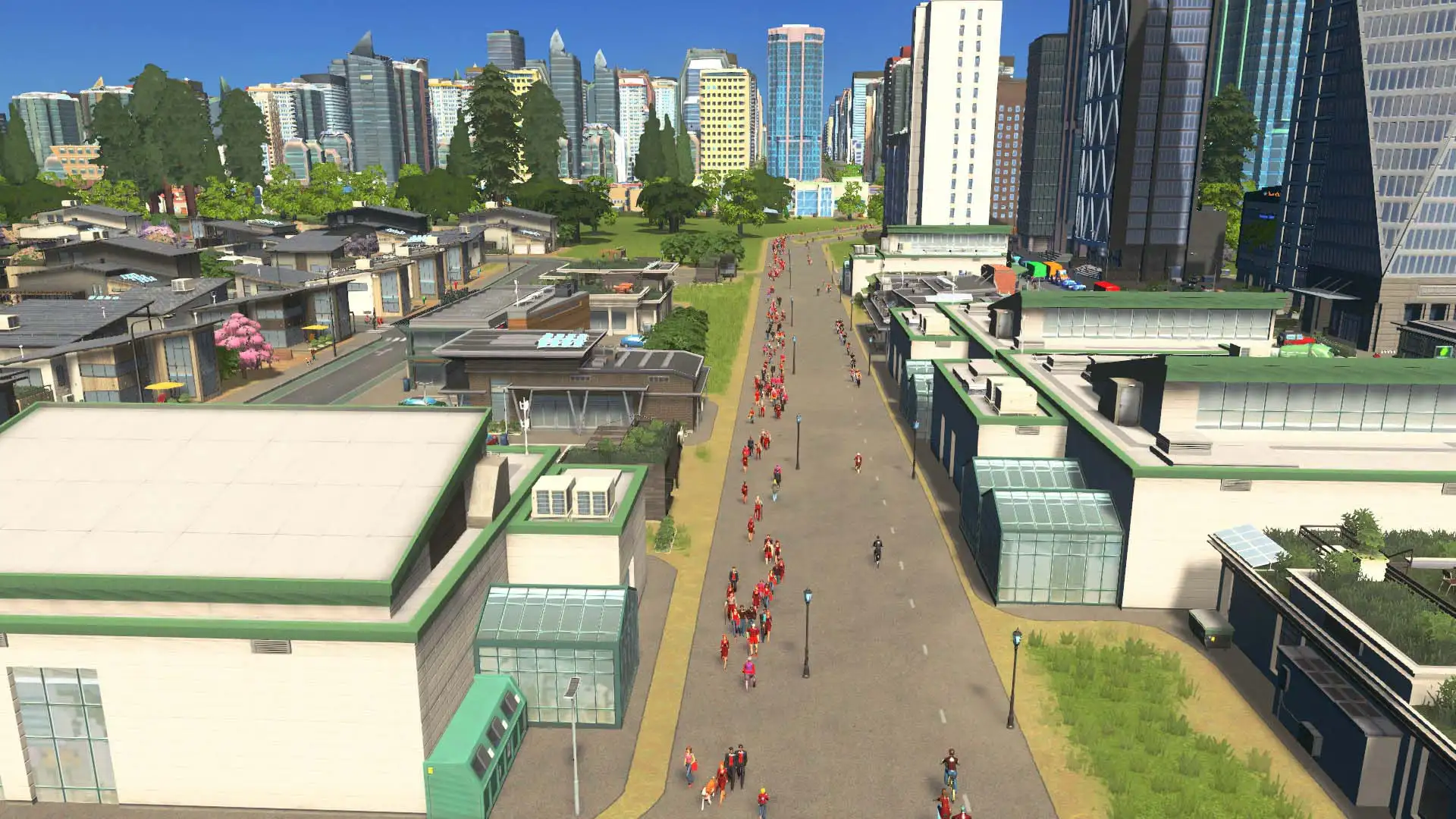
Better traffic management: a pedestrian-friendly neighbourhood.
In a typical Cities: Skylines city, managing traffic is usually your biggest challenge. With a badly-designed system, people and goods can’t get to where they’re going, causing widespread abandonment; and potentially, the death of your once-flourishing settlement.
At the start, you haven’t got the money to lay down a comprehensive, well-planned system of interchanges. But that’s fine, because your two or three low-density neighbourhoods aren’t producing enough traffic to stress even the most basic road network.
As your city begins to grow, increasing numbers of people will start needing to travel to the same places at the same time. Like at the start of the day cycle when everyone heads to your industrial area to work. Traffic demand grows steadily, which is why problems often sneak up. Everything is going fine then suddenly you turn round and notice an enormous tailback at a key junction. As far as you can see, it materialised from thin air. But you only need to edge past the demand vs. throughput balance, and a queue will steadily form.
Eventually, vehicles stuck in gridlock traffic give up and despawn. If left unchecked, that’ll cause massive problems. Cargo trucks can’t deliver products, so shops have nothing to sell and factories have no raw materials to work with. Hearses can’t collect dead people and firefighters can’t get to that huge blaze on the other side of town.
Aside from making you feel like a bad mayor, when buildings can’t function they get abandoned which causes unemployment, falling taxes and people moving out. It’s quite difficult to go bankrupt in this game - but that’s certainly one way.
Instead of managing traffic, reduce it
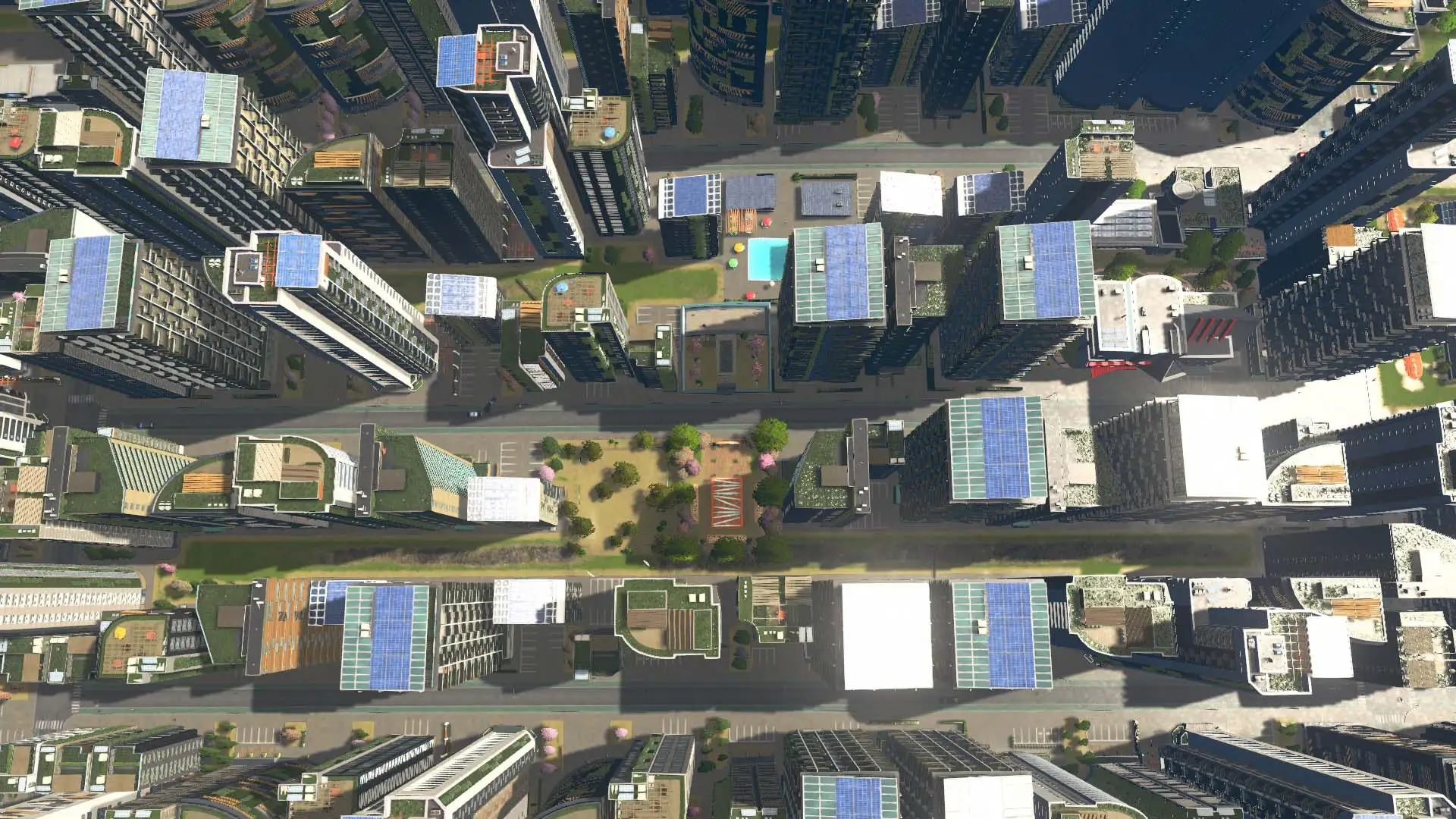
Thousands of residents, almost no traffic.
You can endlessly optimise your road network by widening streets, adding on/off ramps, squeezing in roundabouts, designing new interchanges, or flat out burying your problems with loads of tunnels. But often, a more elegant solution is to reduce the amount of traffic that takes to the roads in the first place. There’s lots of ways to reduce demand so that people and things move efficiently around the city. Let’s get started!
Policies first
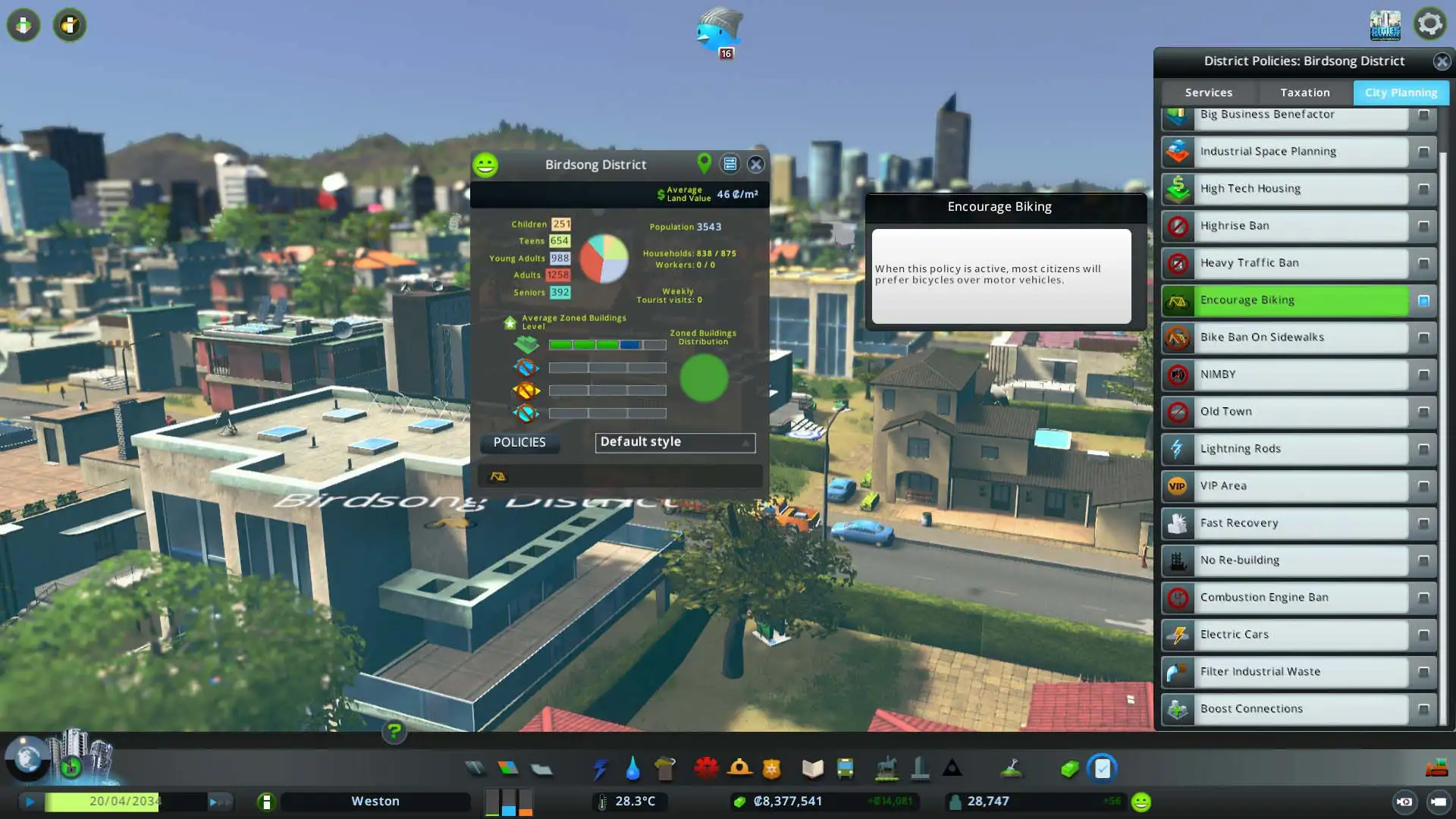
On compatibility: Each expansion added new policies. If you’ve not got them all your list might look a little different to mine. If you’d like to support the site, grab them from the links on the right. Thanks!
Cities: Skylines gives you a lot of helpful policies for reducing traffic across the city or just within a specific area.
Free Public Transport will make leaving the car at home a much more desirable option. It’s expensive but useful in some circumstances. Pull up the budget panel and look at your total public transport income. Compare that with your budget surplus and see if you can cope with it. If you’re desperate, this might take the pressure off long enough for you to do a wider re-work of the road network - or just turn it on in a few key districts.
Encourage Biking is a fantastic policy that came in with the advent of bicycles in the After Dark expansion. Use it and people will favour riding over driving. It has no obvious downside except that people may also skip their local bus route, too. You can also always just reduce the numbers of vehicles on the line to compensate.
Heavy Traffic Ban is another big hitter. It stops trucks carrying cargo through a designated district (be careful you don’t block access to any shops though). If the game’s pathfinding sees that cutting through a residential area is quicker than using the highway, it’ll do that. Turn this on to make sure trucks stick to the main road and to the junctions designed to handle high volume.
Old Town is another cornerstone policy for reducing traffic. It can have a huge effect in the right place. An obvious use - and I think what it’s designed for - is to stop tourists who’ve just gotten off the boat or train pulling out their ‘pocket car’ and driving straight into the city centre. Instead, they have to walk to the nearest transit connection. You can use this policy to stop people from using a district as a shortcut to their destination. It’s a bit like the Heavy Traffic Ban but for cars.
City policies that are situationally useful
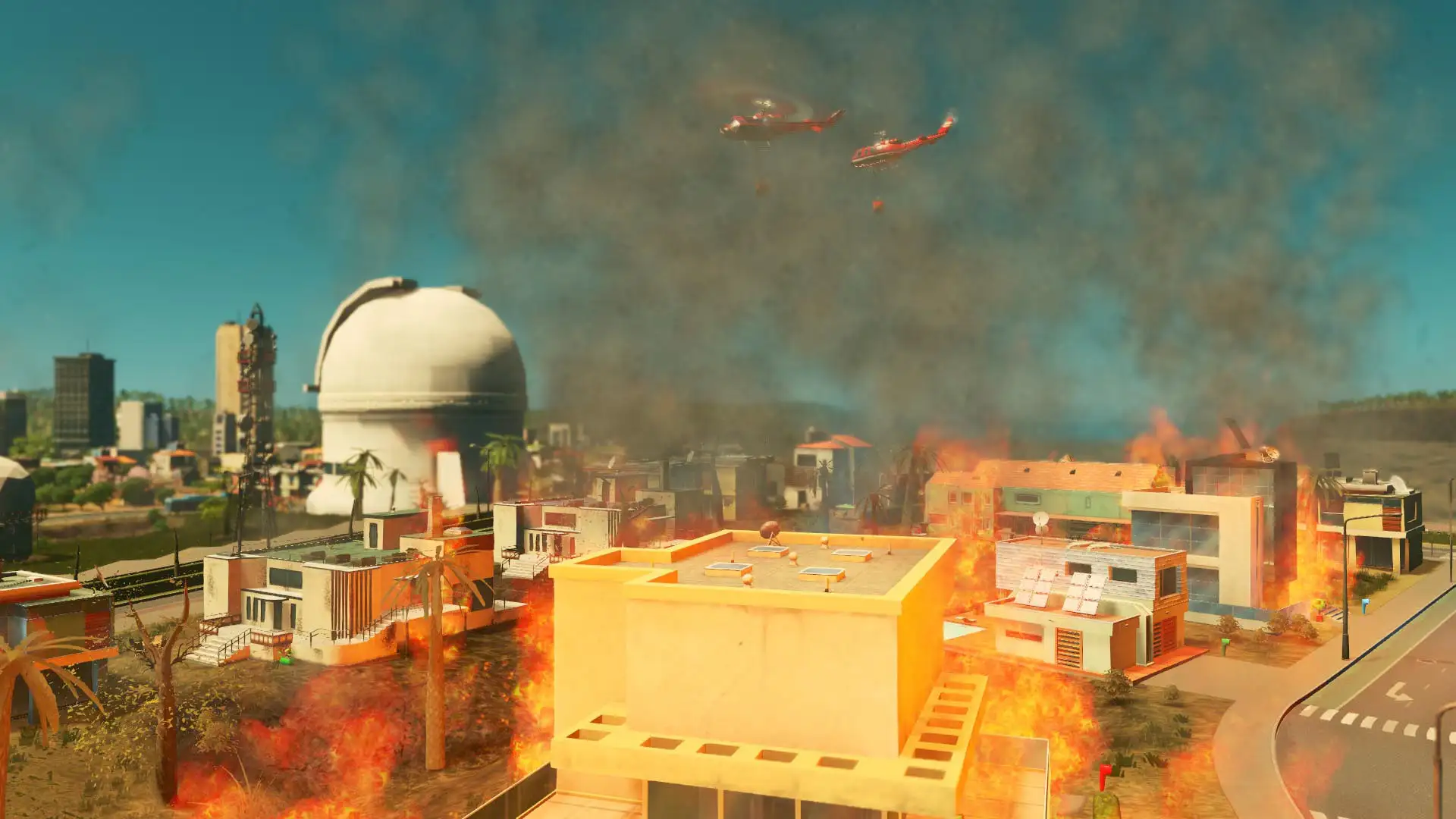
I love the fire helicopters.
Beyond the four big ones above, there’s a few other policies that might help in niche situations.
Highrise Ban is good for helping low- and high-density zones merge better into each other aesthetically by stopping buildings reaching their highest levels. But it also stops buildings reaching their maximum capacity. It’s marginal, but that’s a few fewer cars.
With Helicopter Priority, you can keep city services traffic off the roads and send your helicopters instead. You risk a big fire getting completely out of hand, but you could design around that. Prefer Ferries, for a small upkeep increase, will divert people away from the streets and onto the waterways! Over in your residential districts, Combustion Engine Ban and Electric Cars will reduce noise pollution and, for a while at least, reduce local traffic (but possibly push it elsewhere).
Put your cargo on rails
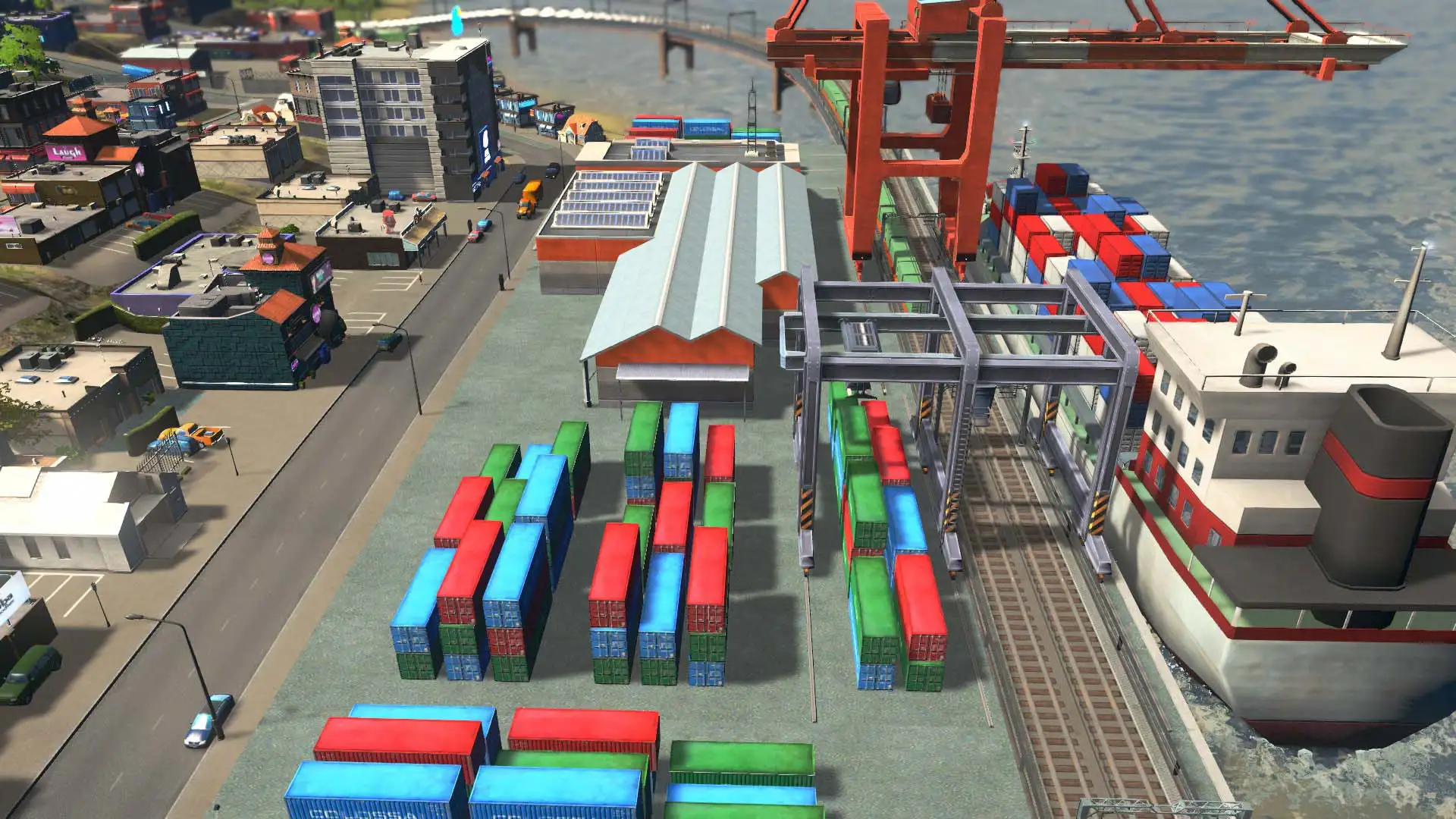
The cargo hub is expensive but excellent. Here it’s importing goods by sea rather than road, sending trucks for local deliveries, and packing cargo onto trains to get sent to other cargo stations around the city. Even if you’ve got no industrial areas and rely on offices for jobs, you’ll still see huge amounts of truck traffic, bringing in goods for your commercial zones. A well-designed road network can get cargo in and out of your city efficiently but it’s almost inevitable that with large commercial zones will come backlogs of heavy traffic.
One way of reducing traffic demand on your network is to move goods around on rails. Put cargo stations near your commercial areas to quickly bring products very close to where they need to go. Connect those stations to others in industrial zones, your outside lines or harbour area, and you’ll relieve a lot of pressure on roads.
This method doesn’t completely eliminate that traffic - once the trains are unloaded trucks still need to do the ‘final mile’ delivery to the shops. There’s no way around that. But it does take those vehicles off the vast majority of the roads they’d otherwise be on.
Low density and organic zoning
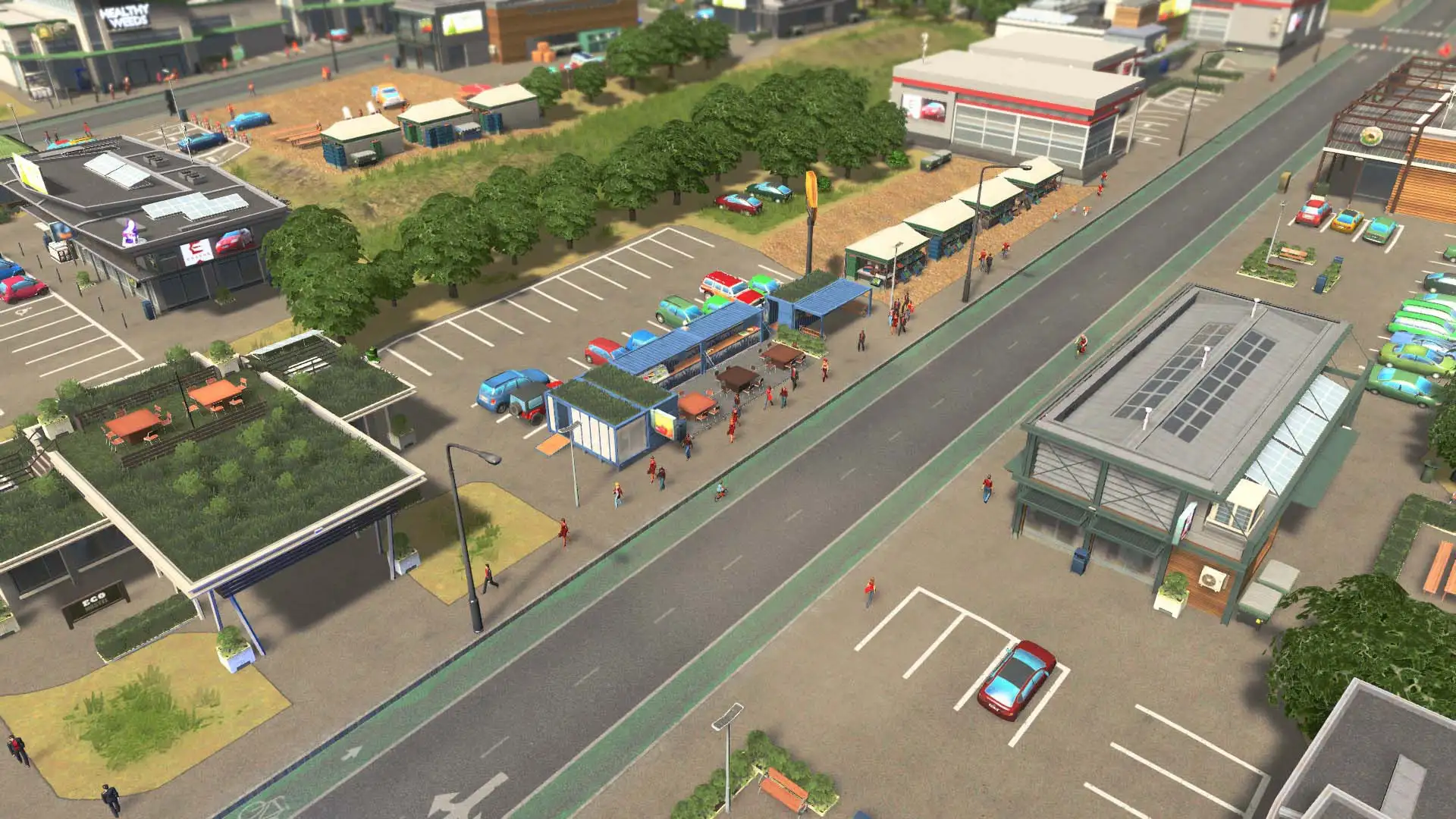
Using low-density housing doesn’t strictly reduce traffic, but it does spread it around. Because fewer people live in the same space, you can encourage them out of their suburbs in different directions, towards separate intersections, lessening pressure on any one point.
The same applies to low-density commercial zones, which cater to fewer customers and therefore reduce demand for specific bits of road.
The type of zoning that does legitimately reduce traffic is the Organic and Local Produce commercial specialisation that came in with the Green Cities expansion. By acting as a mini-factory, businesses source raw materials and finish them on-site. That reduces truck traffic by a full 50%. They also create 20% less garbage, lessening those visits, too.
Organic zones make very little noise - meaning you can put them right inside your residential zones. That brings them within walking distance of many more people, another traffic reduction measure.
Design a great public transport system
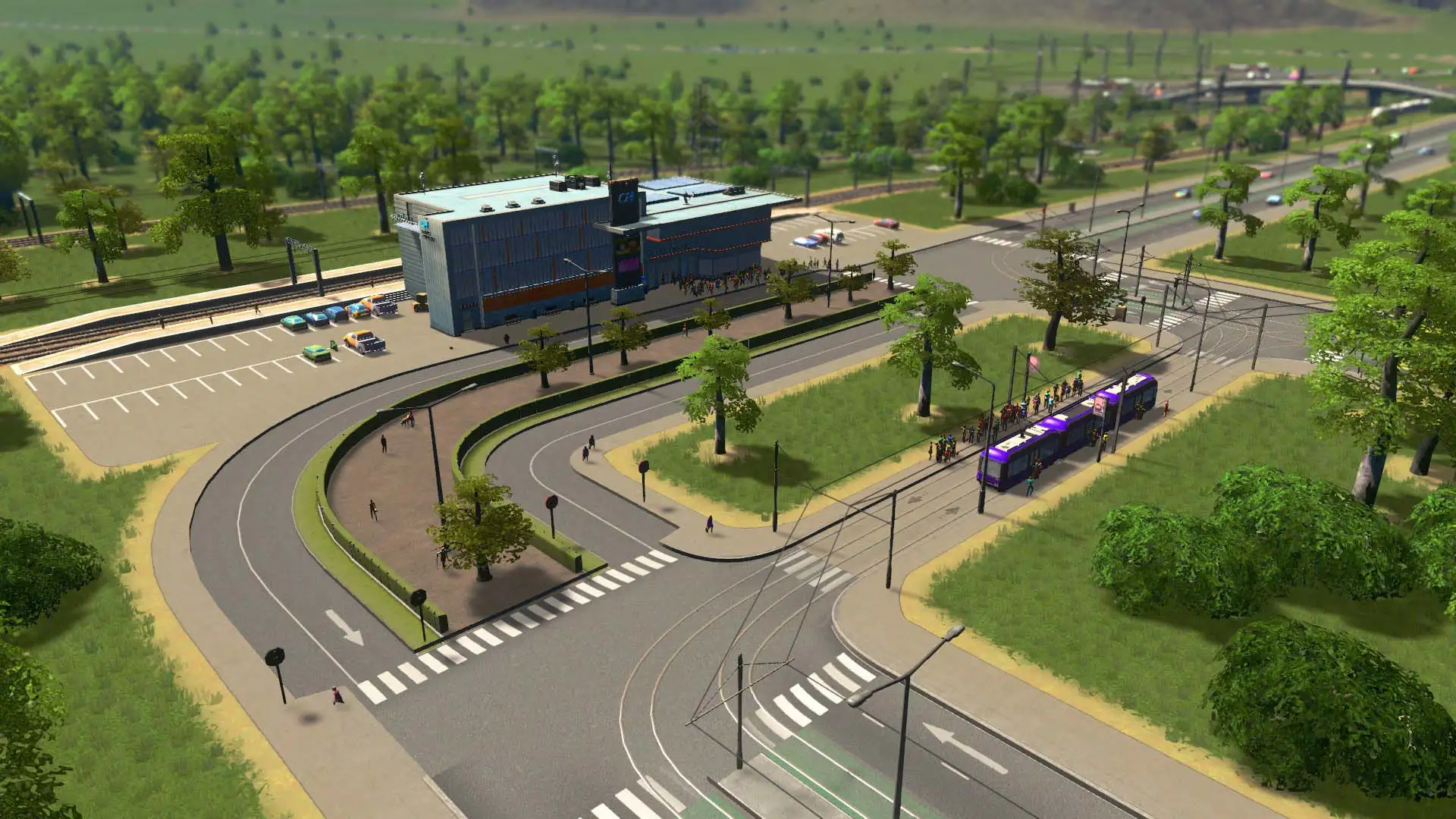
The transit hierarchy: residents take buses from the suburbs to the high street where they swap to trams that go to the train station for services to other parts of the city.
This is really the most obvious way - and it warrants it own post which I’ve done here so I won’t go into tons of detail. The main thing - as IRL - is public transit needs to be a genuine alternative for people to switch.
The game’s pathfinding will decide the fastest route at the start of the journey. If there’s a bunch of a low-speed roads and a couple of annoying ‘Old Town’ areas they’ll have to drive around to get to work; or a gleaming new monorail that goes direct, with a short, easy walk at each end, well. They’ll do the sensible thing!
The same idea applies to tourists. By providing fast, accessible and well-integrated transport options, you’ll make their decision easy. I’ve written more about tourism here.
Think of public transport as a hierarchy: use local routes that feed medium-length routes, intersected with long-range routes. So your buses feed your metro, which takes you to the train station. Complement, rather than duplicate, your lines to maximise use.
Build neighbourhoods around pedestrians
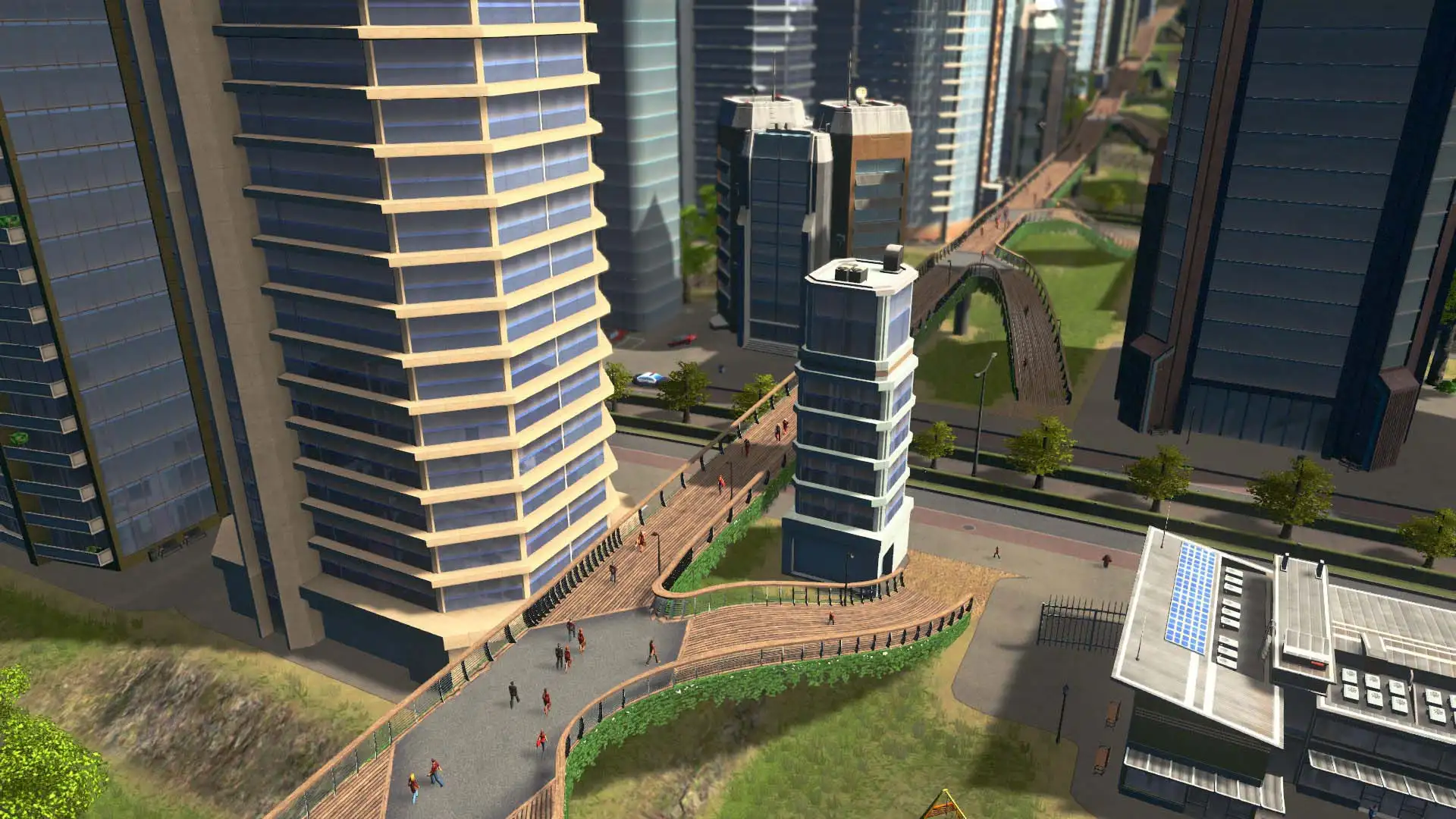
This was before I knew about the crosswalk trick… this bridge brings many more residents within range of each transit stop.
The game doesn’t do an amazing job of pointing you towards footpaths, nor tell you how important they are. People will only walk a certain distance to their destination or transit stop. If the nearest metro station is too far, they’ll jump in the car. You can use paths to make that distance shorter.
Given the choice, people actually prefer footpaths (or sidewalks, depending from where you hail), even if the route is slightly longer than the street. That makes them brilliant not only for shortcuts but also for steering crowds away from busy intersections.
Pedestrians are great, but they still have ways of causing congestion like when they cross main avenues. By adding crosswalks (see how below) on quiet streets and connecting them with footpaths, you can create whole new streets for people and bikes that keep junctions clear and extend the effective range of your public transport stops.
Encouraging people onto bikes
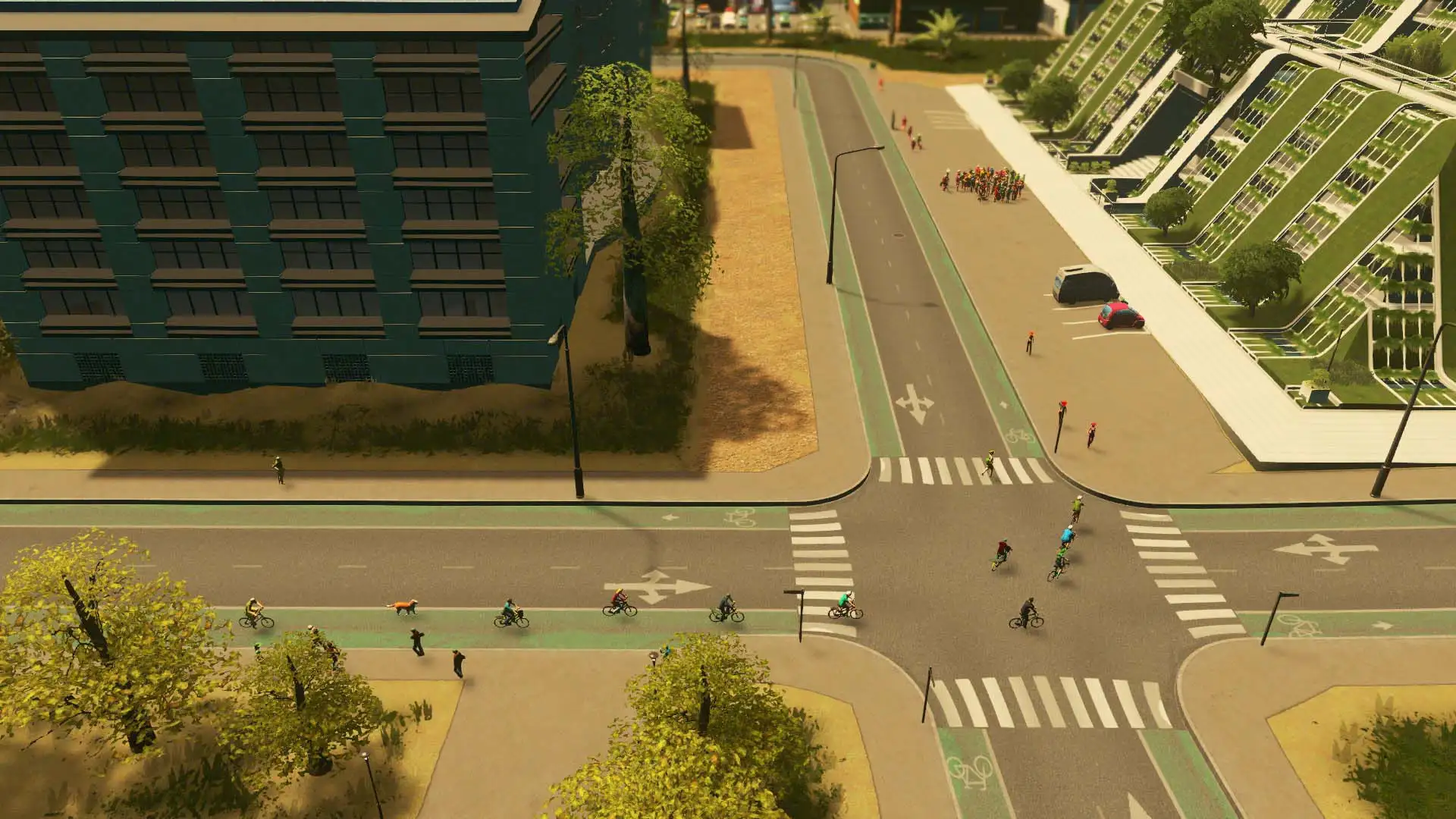
Dogs can use bike lanes, too.
The Encourage Biking policy we looked at earlier is strong already but better with well-designed bike infrastructure. All the ideas for pedestrians apply to bikes, and cyclists will use your pedestrian bridges and underpasses, too.
Throughout your suburbs, bike lanes give fast and convenient ways to get around (they’ll ride on the sidewalk in the absence of lanes). Don’t worry about removing on-street parking spaces, by the way. They’re just aesthetic and residents don’t need them - they’ll spawn and despawn their cars as needed.
Bike paths, on the other hand, are a bit of an oddity. I use them, but cyclists will happily ride on pedestrian paths, whereas pedestrians can’t use a bike path. That makes bike paths less flexible, and as far as I can see bikes don’t ride any faster on them. They’re nice for flavour though - like running long, fast bike highways all across town.
If you’re going all-in on bikes, you can use the Asset Editor to create new road types that include bike lanes, like my favourite monorail-road-bike lane combo.
I’ve written a guide for building biking superhighways.
Add crosswalks/pedestrian crossings on quiet streets
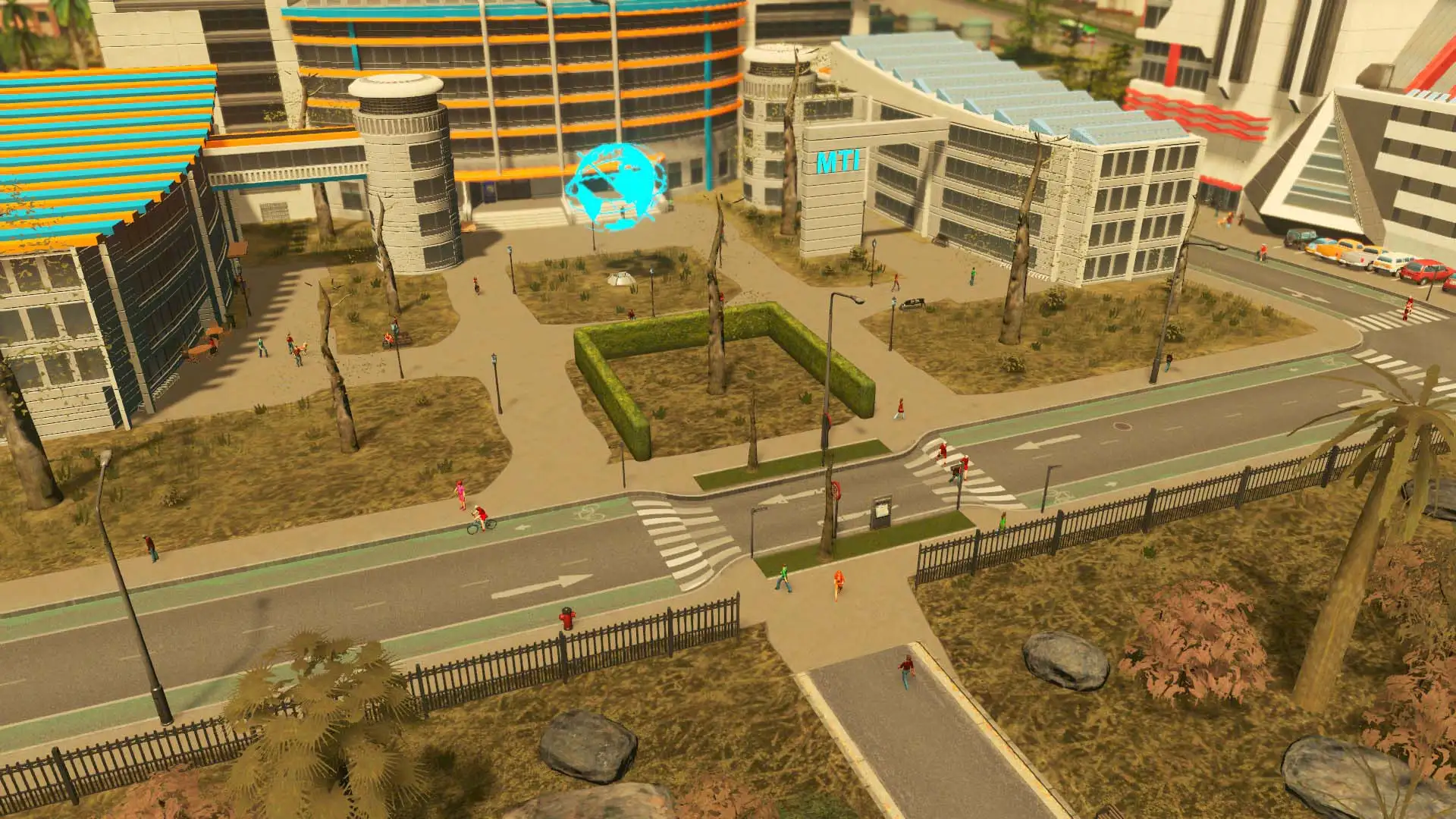
A crossing on a straight street. And yes… we’ve suffered a recent fire in the neighbourhood.
In the unmodded game, there’s no way of removing or turning off crosswalks, but you can add them. Crossing points get added at intersections, but they also appear when one road type runs into another. You can use this to your advantage. Take a standard two-lane road as an example. Upgrade one section to another type, and you’ll get crossing points where they meet! For more precision, delete a few stretches of road, and draw a very short piece of road where you want the crossing. Then just reconnect for the same effect.
I’ve covered this in more detail (including the how and the why) here.
As a last resort, use gimmicks
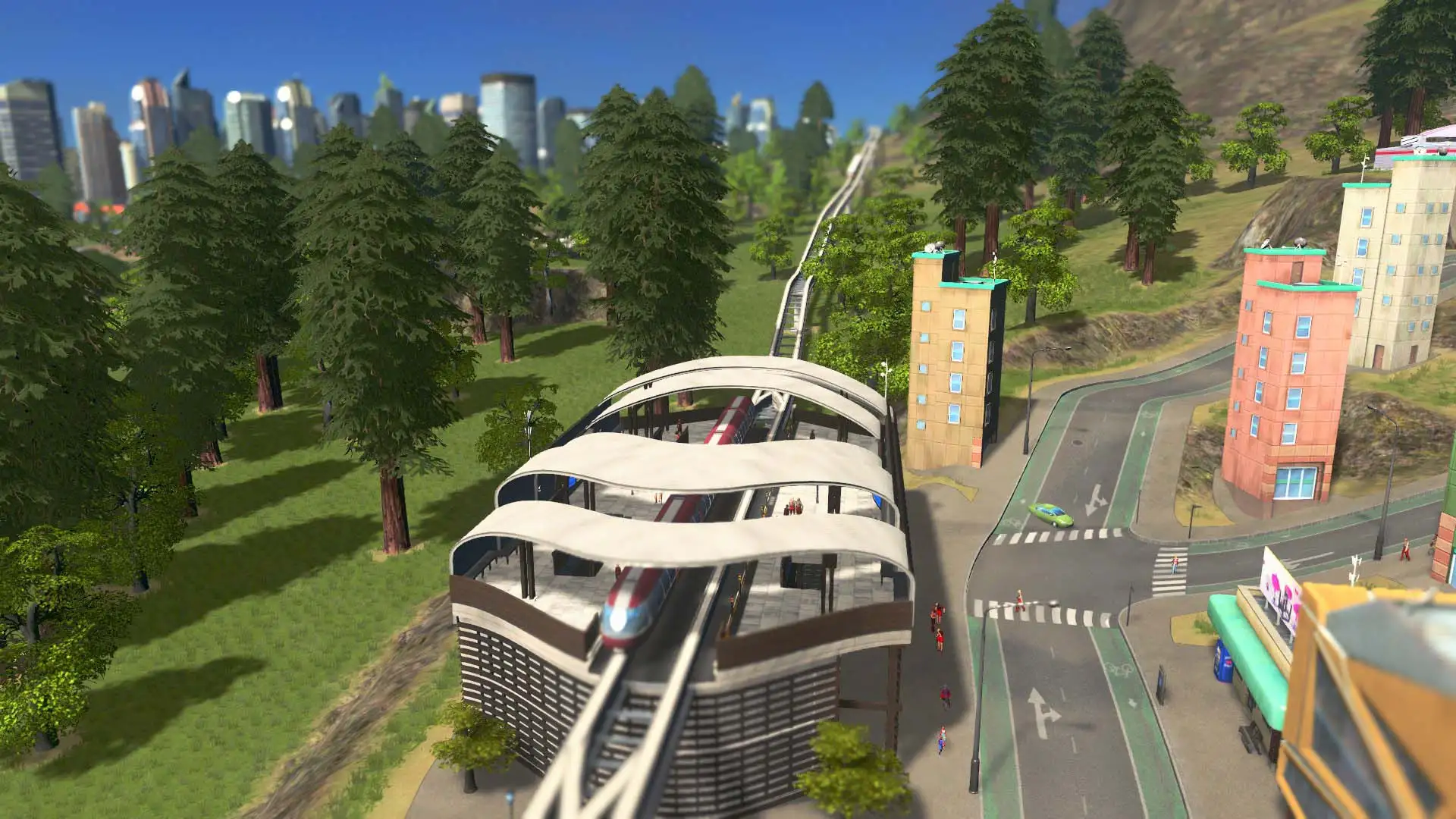
Want to go to work? It’s monorail or nothing in this district.
When all else fails, you can actually separate your districts. By which I mean, no road connections whatsoever. You’ll still need services like garbage inside, but you can have no road links to the rest of the city. That forces people and goods to use public transport and cargo stations to get in and out. It’s a bit weird, but it works.
For a more satisfying version, give satellite towns highway access but no local roads to the rest of the city. That way, your public transport will still be the quickest route but it feels less like cheating.
Roundup
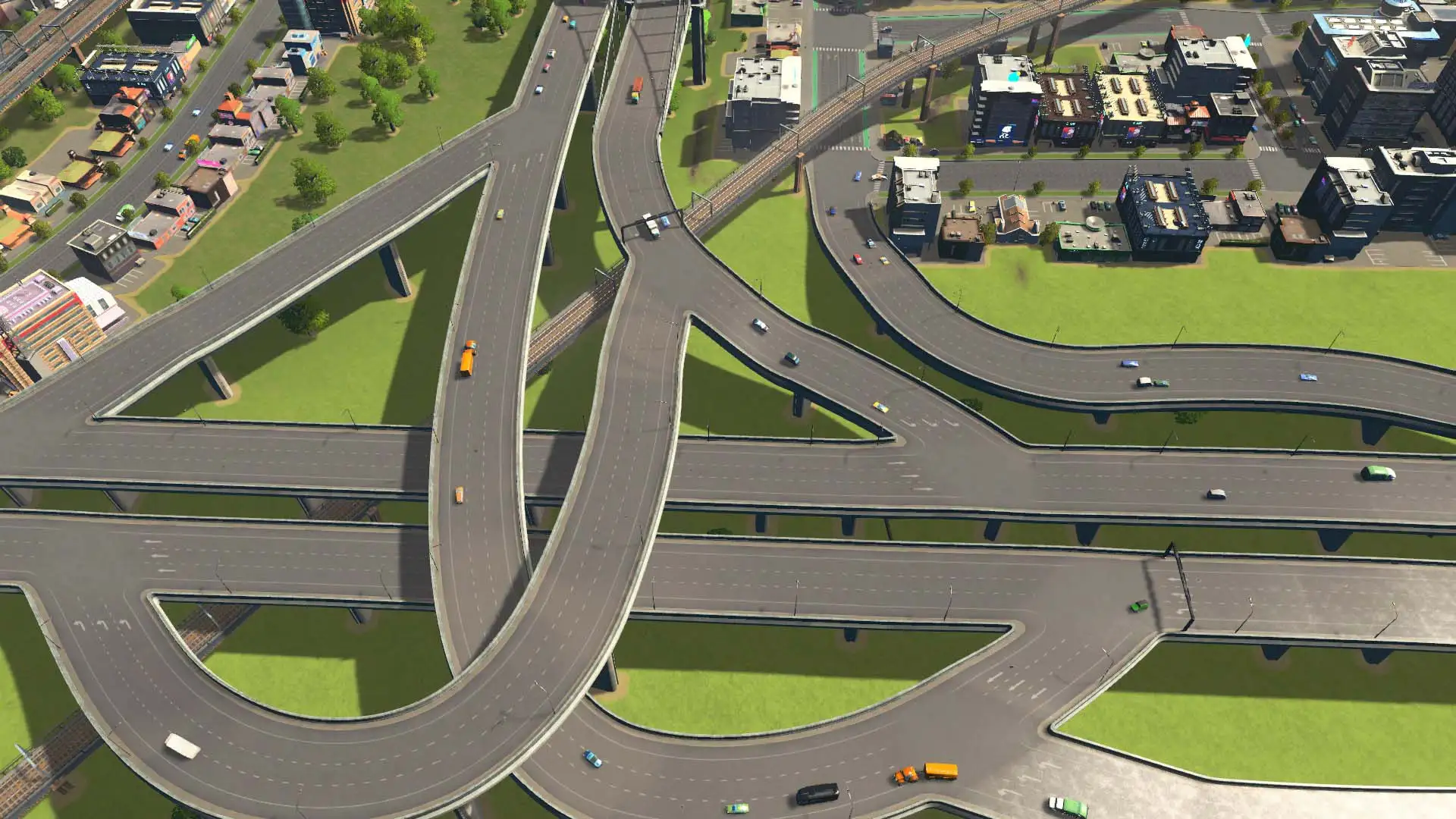
Another life is possible.
So there you go! Thanks so much for reading.
There’s a lot of ways to keep your cims out of their cars and your cargo firmly on rails. There’s helpful city polices, well-thought-out transit and neighbourhoods built around pedestrians and cyclists. You can also use low-density zoning and specialisations to help.
You can take this quite far. Well-designed neighbourhoods can get to the point where they don’t even need a bus or tram service. A metro or train station with a good path network can carry the weight all by itself. I hope you found some useful ideas here. If you did and would like to support the site, it would be amazing if you bought your next Cities: Skylines DLC using one of my affiliate links in the sidebar. Thanks so much!